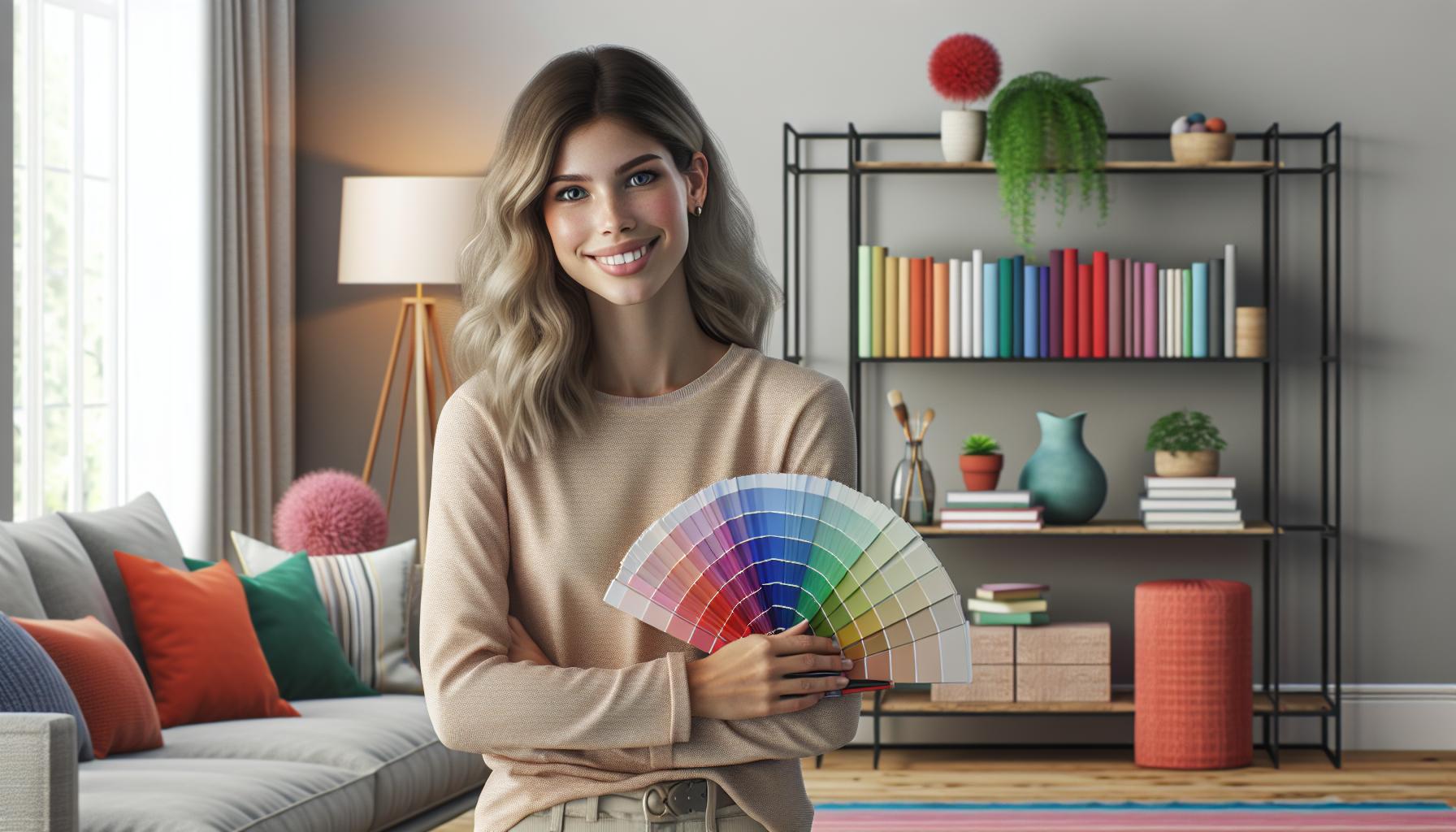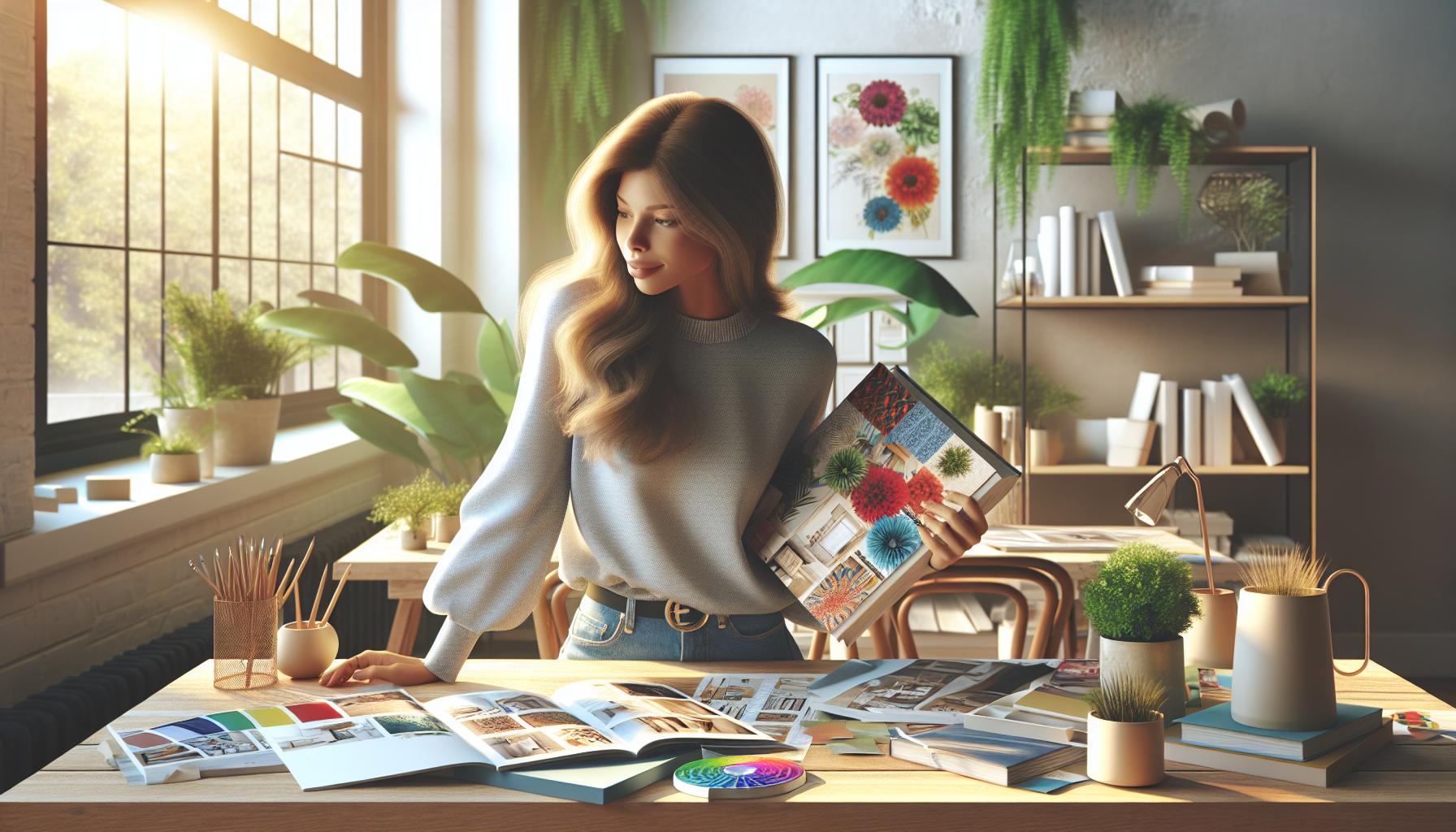Diving into the world of interior design can feel like stepping into a vibrant, ever-evolving art gallery. As a beginner, it’s easy to get overwhelmed by endless styles, color palettes, and design principles. But there’s good news—interior design books can be your best friend on this creative journey. These books offer a wealth of knowledge, from foundational concepts to practical tips, making them an invaluable resource for anyone looking to transform their space.
I’ve always believed that a well-curated book can spark inspiration and guide you through the design process. Whether you’re aiming to revamp a single room or your entire home, the right book can provide the insights and confidence you need to make informed decisions. Let’s explore some of the top interior design books that can help beginners like you unlock the secrets to creating beautiful, functional spaces.
Key Takeaways
- Interior design books for beginners are essential resources for beginners, offering foundational knowledge, practical tips, and inspiration to transform spaces effectively.
- Understanding interior design basics, such as color, form, and texture, allows beginners to create harmonious and functional living environments.
- Beginner-friendly interior design books should provide clear explanations, visual aids, and practical exercises to facilitate learning and comprehension.
- Top recommended books for beginners include “Homebody” by Joanna Gaines, “The Interior Design Handbook” by Frida Ramstedt, and “Made for Living” by Amber Lewis, each offering unique insights and guidance.
- Choosing the right interior design book involves aligning content with personal style, space preferences, and individual learning styles to ensure a successful and enjoyable learning experience.
- Studying interior design books not only enhances creativity and problem-solving skills but also provides historical context and enriches one’s understanding of design trends and principles.
Interior Design Books for Beginners
Interior design books for beginners combines aesthetics and functionality to create harmonious spaces. Beginners can start by learning the essential elements of design: color, form, and texture. Color sets mood and influences perception. For example, blue can evoke calmness, while yellow may increase energy. Form defines the shape of space and furniture—rectangular tables and circular rugs alter visual flow. Texture adds depth and interest by contrasting smooth and rough surfaces; think of a soft couch against a brick wall.
Successful design involves balance, proportion, and harmony. Balance distributes visual weight evenly within a room, achieved through symmetrical or asymmetrical furniture arrangements. Proportion refers to the size relationship between elements; large paintings complement spacious walls. Harmony unifies design elements, ensuring cohesive style; matching wood tones in furniture and flooring can create an elegant look.
Functionality is key. Design choices must meet practical needs, such as providing adequate storage or ensuring comfortable seating. Lighting enhances both function and ambiance. General, task, and accent lighting work together to highlight different areas; overhead lights for illumination, desk lamps for tasks, and spotlights for artwork. Understanding these fundamentals equips beginners to make informed design decisions.
Key Features of a Beginner-Friendly Book

A well-crafted interior design book for beginners should offer comprehensive yet approachable content. It’s essential for these books to break down complex concepts into digestible pieces.
Clear Explanations
Clear explanations are crucial in aiding comprehension. A book should define key terms and principles without assuming prior knowledge. For example, explaining the difference between balance and proportion helps beginners grasp foundational concepts essential for successful design.
Visual Aids and Illustrations
Visual aids and illustrations enhance understanding by providing concrete examples. Quality books feature diagrams and photos, allowing readers to see real-world applications of design elements. These visuals can highlight color schemes, room layouts, and furniture arrangements, making abstract ideas more tangible.
Practical Exercises and Tips
Practical exercises and tips promote active learning by encouraging hands-on practice. A book might include step-by-step guides or projects that prompt users to apply design principles in their own spaces. Such activities help bridge the gap between theory and practice, boosting confidence in one’s design skills.
Top Interior Design Books for Beginners

Exploring interior design books can significantly enhance understanding for those just starting. The right selection offers practical insights and inspiration.
Book 1: An In-Depth Look
“Homebody: A Guide to Creating Spaces You Never Want to Leave” by Joanna Gaines offers a comprehensive exploration of design fundamentals. I appreciate how this book breaks down each room in a house, focusing on how layout, colors, and materials interact. With detailed case studies, it helps readers visualize concepts and apply them to personal spaces. The clear step-by-step guidance ensures beginners feel confident as they embark on their design journey.
Book 2: Highlights and Features
“The Interior Design Handbook: Furnish, Decorate, and Style Your Space” by Frida Ramstedt focuses on practical design insights. This book doesn’t just show beautiful interiors; it teaches how they’re constructed. I find its emphasis on proportions and styles beneficial for setting a solid design foundation. Illustrated guides and checklists enable readers to engage actively, turning theoretical knowledge into practical application.
Book 3: Why It Stands Out
“Made for Living: Collected Interiors for All Sorts of Styles” by Amber Lewis stands out due to its focus on blending lifestyle with design. The author’s approach marries aesthetics with functionality, making it ideal for beginners eager to create personalized spaces. I admire how real-life examples illustrate various design principles, while tips on mixing textures and patterns offer creativity without overwhelming readers. It inspires confidence in crafting spaces that are uniquely tailored to individual tastes.
How to Choose the Right Book for You

Selecting the ideal interior design book is critical for a successful learning journey. By aligning book content with personal space and style preferences and considering individual learning styles, anyone can find the perfect resource.
Consider Your Space and Style
Examining personal style and the space to be designed helps narrow down book choices quickly. If a room exudes a modern vibe, focus on books detailing contemporary design principles. For eclectic tastes, selecting a resource that covers diverse styles and integration techniques makes sense. By visualizing the transformation desired, the right guiding book becomes more apparent.
Assess Your Learning Preferences
Understanding individual learning preferences ensures the book format encourages effective learning. If visual learning aids the process, choosing a book with abundant illustrations and diagrams enhances comprehension. For those who comprehend better through detailed text, selecting books rich in in-depth written explanations proves beneficial. Assessing how best to absorb information helps tailor book choices to match preferred learning styles.
Benefits of Studying Interior Design Books
Interior design books provide a foundation for learning. By exploring these resources, I gain access to expert insights and strategies that guide me through the basics of design. These books offer a structured approach, helping me understand complex concepts like balance and proportion with ease.
Studying these books allows me to connect with history and design trends. They trace the evolution of styles and principles, offering context that enhances my appreciation of various design elements. This historical perspective helps inform my decisions when adapting or merging different styles.
Interior design books enrich creativity and problem-solving skills. Through detailed case studies and real-life examples, I see how designers overcome challenges in unique spaces. These books inspire me to think outside the box, encouraging innovative solutions for my own design dilemmas.
Visual examples in these books improve my understanding of how elements like color and texture affect a space. By examining professional layouts and color schemes, I can visualize how to apply these concepts to my projects. This visual guidance strengthens my ability to create cohesive, aesthetically pleasing designs.
These resources also foster practical skills. Many books include exercises and activities that prompt me to apply design principles in real scenarios. This application solidifies my learning and boosts my confidence as I experiment with different design techniques in my own space.
Beginners’ Book
Exploring interior design books for beginners can be both exciting and daunting. The right books can simplify this journey by offering clear guidance and practical insights. By choosing resources that align with personal style and learning preferences, you can dive into the world of design with confidence. These books not only provide foundational knowledge but also inspire creativity and innovation. Whether you’re transforming a single room or an entire home, the wisdom found in these pages can help you create spaces that reflect your personality and meet your functional needs. Embrace the learning process and watch your design skills flourish.

